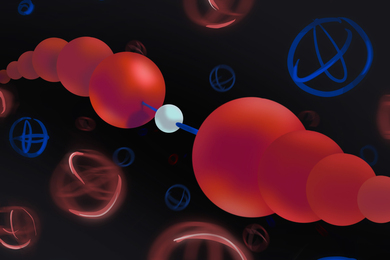A UCLA cancer study reported in this month's Nature Nanotechnology validates earlier work by MIT engineers, and is emblematic of an explosion in research at the intersections of engineering, the life sciences and medicine, according to MIT Dean of Engineering Subra Suresh.
Since about 2002, Suresh and colleagues have applied state-of-the-art techniques for the study of nanoscale mechanical properties of materials to the study of the physical characteristics of living cells, with a particular emphasis on infectious diseases and cancer. In several papers over the past three years, they have shown that metastatic, or spreading, pancreatic cancer cells are significantly softer (less stiff) than their benign and nonmetastatic counterparts. The results paved the way for a potential new diagnostic test for the disease.
The UCLA work takes the research an important step further. Those researchers, led by James K. Gimzewski, analyzed live cancer cells taken from body cavity fluids from the lung, breast and pancreas of patients with suspected metastatic cancer. Among other things, fluid samples contain both benign and metastatic cells for direct comparison.
Using biomechanical techniques similar to those of the Suresh team, Gimzewski and colleagues found that cancer cells were nearly four times softer than their benign counterparts from the same fluid sample.
Suresh, who wrote an accompanying commentary to the UCLA paper in Nature Nanotechnology, describes such a nanomechanical approach as a potentially powerful means for detecting cancer along with other tools currently used for diagnosis.
"This is a good example of an intersection of engineering with life sciences and medical practice," Suresh, who is also the Ford Professor of Engineering, told the News Office in an interview. "We've brought tools that the medical community is not generally aware of to probe a human disease, in this case cancer."
The UCLA and MIT work toward a potential new diagnostic method for cancer is just one example of what can be achieved when engineers and scientists work together on the study of human diseases, Suresh said, adding that such collaborations between engineers and researchers in the life sciences are part of a rapidly growing trend.
As an example, he cited MIT's recent announcement of plans to build the David H. Koch Institute for Integrative Cancer Research, which will bring together scientists and engineers under one roof to develop new and powerful ways to detect, diagnose, treat and manage cancer.
"The recently announced Koch Institute … will provide a forum to develop many such interactions among faculty members from the schools of engineering and science," he said.
A version of this article appeared in MIT Tech Talk on December 5, 2007 (download PDF).





